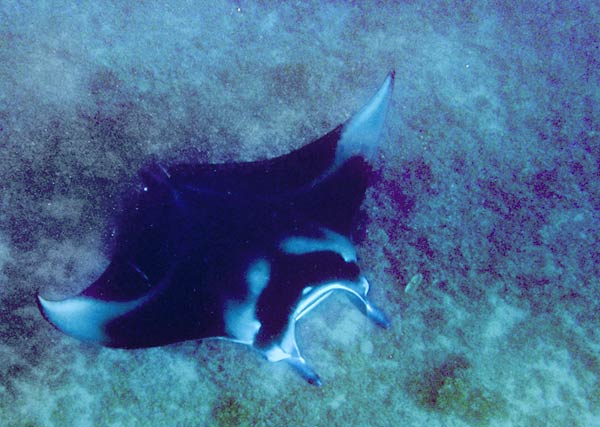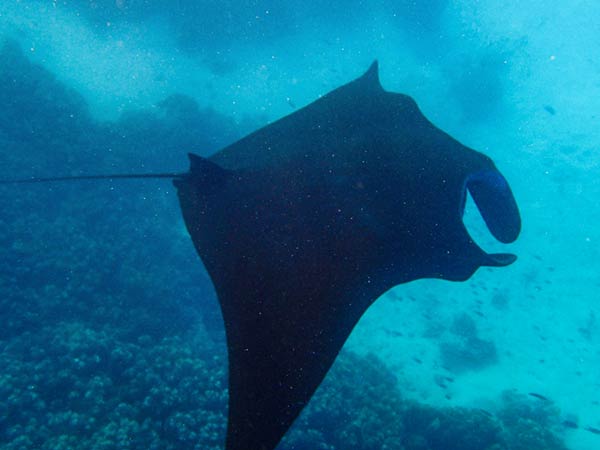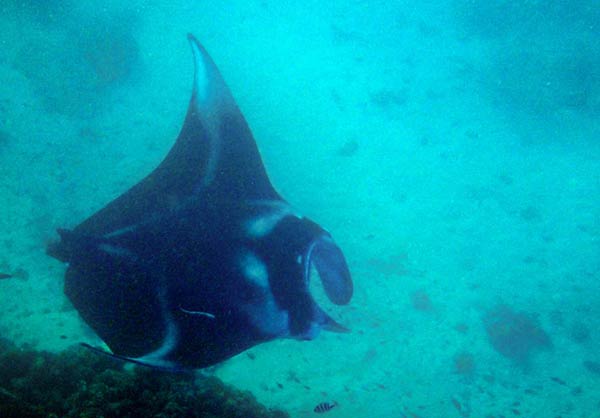August 12, 2015
Yea, really bad pun, but really great animals! Here’s some of the video Cyndi got…
And some stills below. (The water wasn’t very clear, but that’s the irony. They’re eating the plankton in the water; The same plankton that clouds up the water and reduces the visibility. Oh well. What can you do with that wacky nature!)
The big one, the one with the white and black markings, probably had a wingspan of over 10 feet. The “little one” wasn’t that much smaller.
We heard that the best time to see the mantas is about a half hour before high tide. We don’t know if this is true or not – the guy at the Manta Resort told us tide didn’t matter, but all the local tour boats showed up just before high tide. We went early and did some drift-snorkeling and the mantas didn’t show up until the appointed hour. (By the way, the snorkeling was really nice!)
Manta Etiquette:
1. Don’t touch the mantas. They have a mucus coating that protects them from infections and parasites. If you touch them, you’ll rub it off and leave them vulnerable.
2. Don’t dive down. You may get a closeup view, but it will likely be your last as the mantas will swim off. That’s not fair to the others snorkeling with them. If you’re calm, quiet and still, they will mostly likely hang around for a long while.
3. Let others know when you spot them. They’ll do the same for you. There was an amazing spirit of cooperation out there yesterday!
Below is an interactive Google Map with the important locations…









